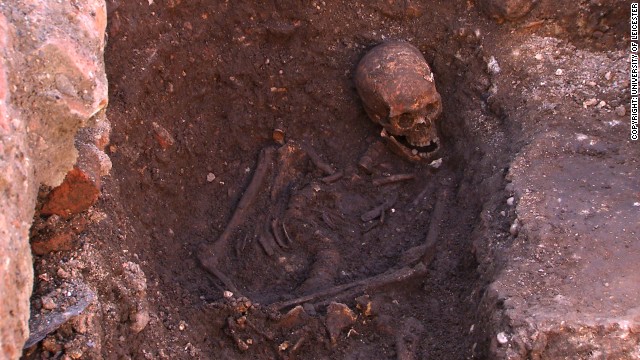
Mitochondrial DNA extracted from the bones was matched to Michael Ibsen, a Canadian cabinetmaker and direct descendant of Richard III's sister, Anne of York.
Now, there’s the mystery of the coffin within the coffin.
Archaeologists working at the site in central England where Richard III’s body was found underneath a parking lot are currently puzzling over a sealed lead coffin containing the remains of a yet-to-be-identified person.
The lead coffin was found encased in a larger stone coffin.
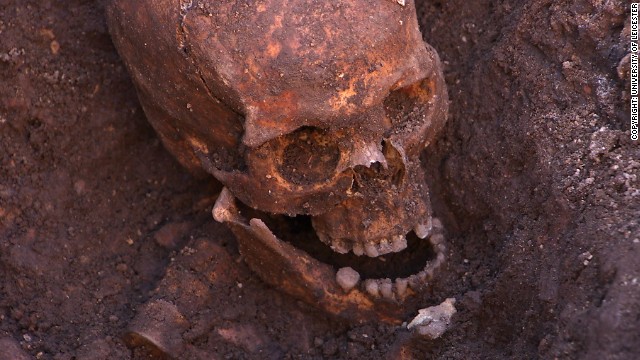
The skeleton was discovered buried among the remains of what was once the city's Greyfriars friary, but is now a council car park. The skull was found in the first trench of the Grey Friars dig.
The smaller coffin is intact “except for a hole at one end of the casket through which we could tantalizingly see someone’s feet,” said Mathew Morris, the fieldwork director at the site.
New discovery just as exciting
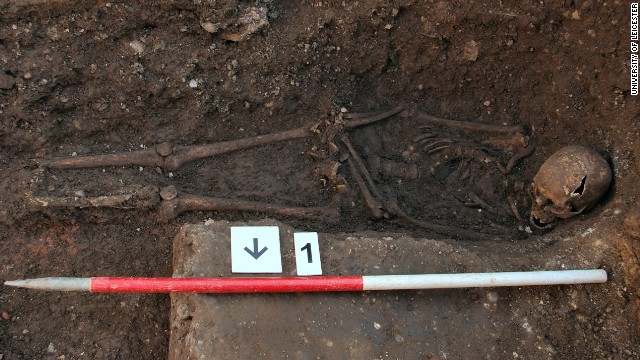
The skeleton being excavated, shows the curve in the spine and the way the head had been squashed into the grave. The hands may also have been tied.
Last year, archaeologists unearthed a body buried beneath a nondescript parking lot in the city of Leicester. In February, they confirmed the body was that of Richard III, the last king of England to die on the battlefield.
The news drew global attention and set off a debate over Richard’s bloodthirsty reputation.
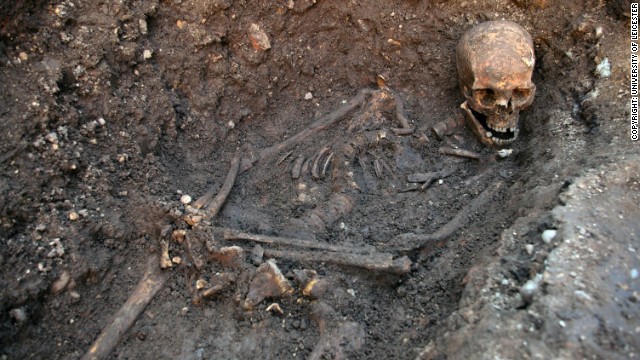
Richard Buckley, the lead archaeologist on the project, said the unusual position of the skeleton's arms and hands suggested the king may have been buried with his hands tied.
Archaeologists from the University of Leicester, who have been toiling away at the site this summer, say the discovery of the double coffin is just as exciting.
They only uncovered the lead coffin last week after eight people hauled the heavy lid off the stone coffin. But figuring out who’s inside looks set to be a much tougher task.
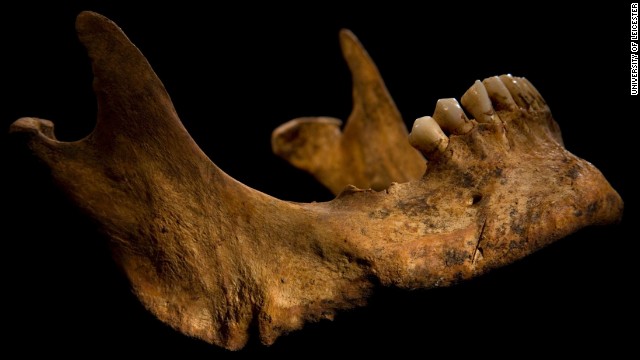
The lower jaw shows a cut mark caused by a knife or dagger.
“This inner coffin is likely to contain a high-status burial, although we still don’t know who it contains,” Morris wrote in a blog post. “No writing was visible on the coffin lid but it does bear a crude cross soldered into the metal.”
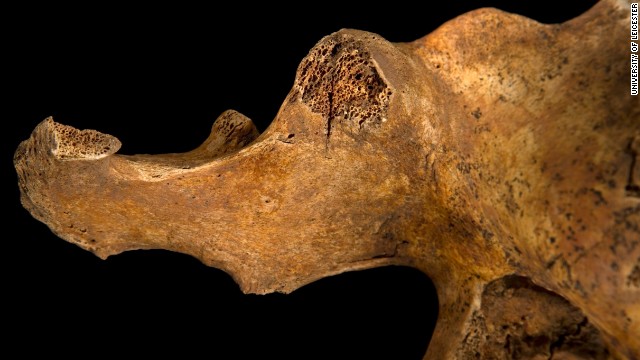
The image shows a blade wound to the pelvis, which has penetrated all the way through the bone.
There are three main contenders for the identity of the coffin’s inhabitant: a medieval knight named Sir William de Moton of Peckleton, and two leaders of the English Grey Friars order, Peter Swynsfeld and William of Nottingham.
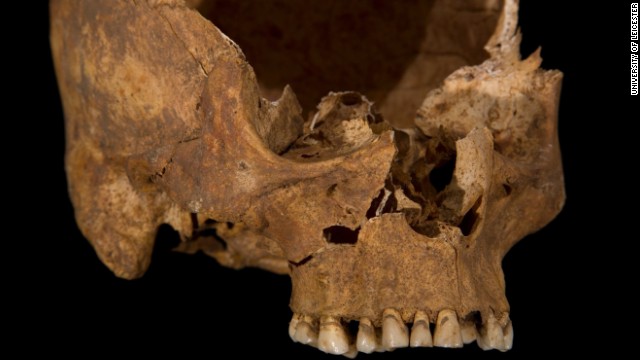
A wound to the cheek, possibly caused by a square-bladed dagger. The front part of the skull has separated naturally along the line of a suture (a joint between the skull bones), which is why it is not present in this picture. This would have fused as Richard became older had he lived.
Beneath the parking lot
The Leicester site is where a church, known as Grey Friars Friary, once stood.
Over the centuries, the whereabouts of the friary’s remnants were forgotten, but it remained in the records as the burial place of Richard III.
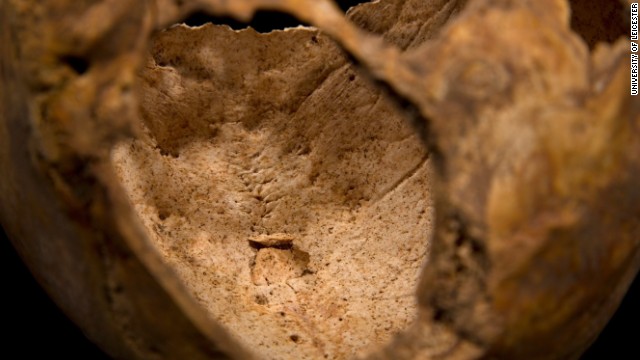
Looking through the hole left by the largest skull injury, two flaps of bone can clearly be seen on the interior of the skull. These are associated with the penetrating injury to the top of the head.
Last year, experts began digging away at the area, which had taken on the less illustrious role of a parking lot. They went on to establish that it was part of the friary and that a skeleton, hastily buried in an uneven grave, was that of Richard.
The archaeologists who undertook a new dig this summer think the double coffin, located near Richard’s grave, was buried during the 14th century, more than 100 years before Richard was killed at the Battle of Bosworth Field in 1485.
Of the coffin’s three likely occupants, Swynsfeld died in 1272, William of Nottingham died in 1330 and Sir William de Moton died between 1356 and 1362.
‘A first for all of us’
Besides the puzzle of who lies within, the archaeologists were excited about the coffins themselves.
“This was a first for all of us on site,” Morris said. “None of the team had ever excavated an intact stone coffin before, let alone a lead coffin as well.”
They have now wrapped up their four weeks of digging at the site. The lead coffin has been taken away so that experts can carry out tests to figure out the best way of opening it without damaging its contents.
But, Morris said, other parts of the friary that the archaeologists tried to investigate this summer appear to have been completely destroyed — meaning that some of the site’s mysteries may never be solved.






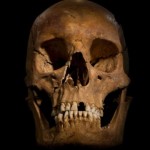

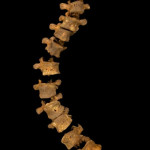
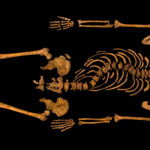
Leave a reply